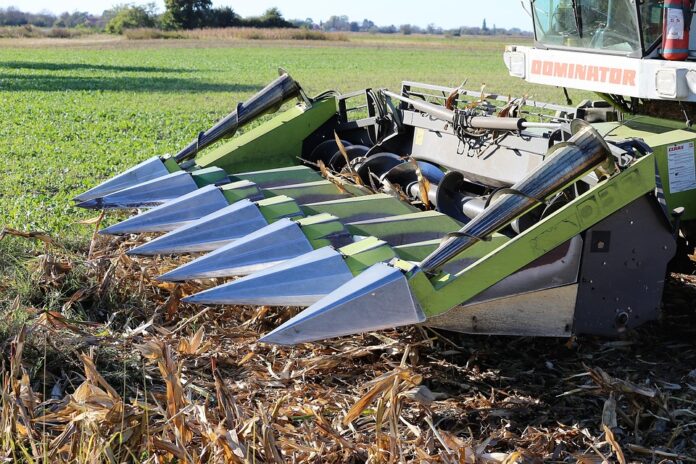Introduction
In the agricultural industry, harvesters play a crucial role in efficiently gathering crops from the fields. Farmers have the option to use either tractor-mounted or self-propelled harvesters for this task. Both types of harvesters have their own advantages and disadvantages, making it important for farmers to consider various factors before making a decision.
Tractor-Mounted Harvesters
Tractor-mounted harvesters are attachments that are connected to a tractor to harvest crops. These harvesters are often used for smaller scale operations where the volume of crops to be harvested is not as high. They are typically more affordable than self-propelled harvesters and are easier to maneuver in smaller fields.
Cost Comparison
One of the main advantages of tractor-mounted harvesters is their lower cost compared to self-propelled harvesters. A tractor-mounted harvester can range in price from $10,000 to $50,000, depending on the size and features. This makes them a more affordable option for small and medium-sized farms.
Flexibility
Tractor-mounted harvesters offer farmers the flexibility to use their existing tractors for harvesting, eliminating the need to invest in a separate piece of equipment. This can be beneficial for farmers who already own tractors and want to maximize their use throughout the year.
Limitations
However, tractor-mounted harvesters have limitations when it comes to efficiency and speed. They may not be as fast or as productive as self-propelled harvesters, especially when it comes to harvesting large fields or crops with high volumes.
Self-Propelled Harvesters
Self-propelled harvesters are standalone machines that are designed specifically for harvesting crops. They are larger and more powerful than tractor-mounted harvesters, making them ideal for large-scale farming operations where efficiency and productivity are key.
Efficiency
One of the main advantages of self-propelled harvesters is their efficiency. These machines are equipped with advanced technology and features that allow them to harvest crops quickly and effectively. They are able to cover large areas in a short amount of time, making them ideal for farms with high crop volumes.
Cost Comparison
Self-propelled harvesters are more expensive than tractor-mounted harvesters, with prices ranging from $100,000 to $500,000 or more. While the initial investment may be higher, the increased efficiency and productivity of self-propelled harvesters can result in long-term cost savings for larger farms.
Technology and Features
Self-propelled harvesters are equipped with advanced technology and features such as GPS guidance systems, yield monitors, and automatic controls. These features help farmers optimize their harvesting operations and improve overall crop yields.
Comparison and Considerations
When comparing tractor-mounted and self-propelled harvesters, farmers must consider several factors before making a decision. The size of the farm, the type of crops being harvested, and the budget available are all important considerations to take into account.
Size of Farm
For small to medium-sized farms with limited crop volumes, a tractor-mounted harvester may be sufficient to meet their harvesting needs. These farms may benefit from the lower cost and flexibility of a tractor-mounted harvester.
Type of Crops
The type of crops being harvested can also impact the choice between a tractor-mounted and self-propelled harvester. Self-propelled harvesters are better suited for crops with high volumes or crops that require specialized equipment for harvesting.
Budget
Budget is another important factor to consider when choosing between a tractor-mounted and self-propelled harvester. While tractor-mounted harvesters are more affordable upfront, self-propelled harvesters may offer long-term cost savings for larger farms with high crop volumes.
Industry Insights
The agricultural machinery industry is constantly evolving, with manufacturers developing new technologies and features to improve the efficiency and productivity of harvesters. Companies such as John Deere, Case IH, and New Holland are leading the way in innovation, offering a range of tractor-mounted and self-propelled harvesters to meet the needs of farmers worldwide.
Financial Data
According to a report by Grand View Research, the global agricultural machinery market was valued at $144.10 billion in 2020 and is expected to reach $207.10 billion by 2028, growing at a CAGR of 4.6% during the forecast period. This growth is driven by increasing demand for agricultural machinery to improve farm efficiency and productivity.
In conclusion, both tractor-mounted and self-propelled harvesters have their own advantages and disadvantages, making it important for farmers to carefully consider their specific needs and circumstances before making a decision. Tractor-mounted harvesters are more affordable and flexible, while self-propelled harvesters offer greater efficiency and productivity. Ultimately, the choice between the two types of harvesters will depend on factors such as the size of the farm, the type of crops being harvested, and the budget available.




